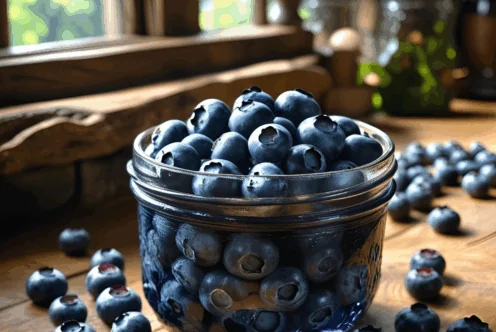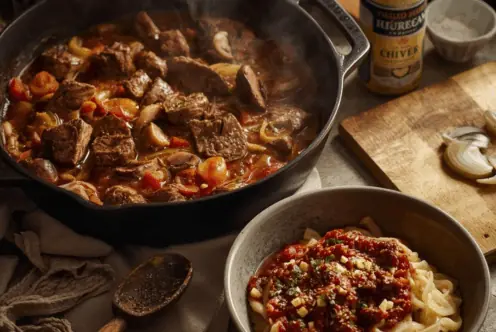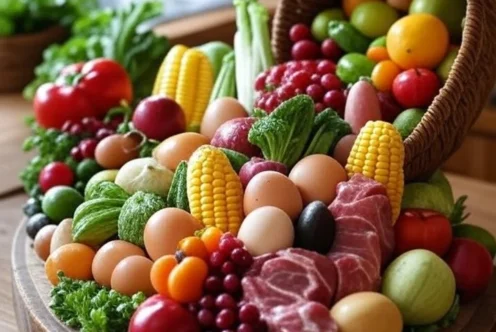Blog
Does Your Food Fuel You or Fatigue You?

My little brother recently got his first truck, and the unique aspect of it is that it boasts a robust racing engine. For this engine to run optimally, it necessitates the use of racing fuel. While it can run on premium fuel, there’s a noticeable difference in performance with higher-octane racing fuel. This analogy applies beautifully when examining our own bodies. Just as my brother’s truck benefits from the best fuel, we too require the right types of food to energize us and keep us functioning at our best. According to registered dietician Beth Czerwony, certain foods can either invigorate us or lead to fatigue. Understanding these food types can help us make better dietary choices and ultimately enhance our energy levels.
Foods That Fuel Our Bodies
Let’s explore the types of foods that can provide us with sustained energy throughout the day.
1. Complex Carbohydrates
Complex carbohydrates are rich in fiber and starch. Unlike simple carbohydrates, which break down quickly and provide a short burst of energy, complex carbohydrates take longer to digest. This slower breakdown translates to a steady flow of energy, which helps in maintaining our focus and stamina.
Some excellent sources of complex carbohydrates include:
- Whole grains (e.g., brown rice, quinoa, whole grain pasta)
- Legumes (e.g., lentils, chickpeas, black beans)
- Vegetables (e.g., sweet potatoes, carrots, and leafy greens)
- Fruits (e.g. bananas, apples and berries)
Including these foods in our diets not only fuels our energy but also provides essential nutrients that are pivotal for overall health. Considering the importance of fiber-rich foods, Harvard Health Publishing emphasizes that fiber aids in digestion and reduces the risk of chronic diseases.
2. Lean Proteins
Proteins are more complex than carbohydrates and require even more time for our bodies to break down. This is critical because the energy derived from protein lasts longer than that from simple carbs. Lean proteins, in particular, are vital as they provide the necessary amino acids our bodies need while minimizing unhealthy fats that can lead to sluggishness.
Some great sources of lean protein include:
- Skinless poultry (e.g., chicken or turkey)
- Eggs
- Fish (especially fatty fish like salmon, which also contains omega-3 fatty acids)
- Beans and legumes
- Low-fat dairy products (e.g., Greek yogurt and cottage cheese)
Registered dietitian Beth Czerwony highlights the importance of identifying lean proteins to maximize energy levels. A helpful guideline can be found on the American Heart Association’s website, which discusses heart-healthy sources of protein.
3. Fluids
Hydration plays a crucial role in our energy levels. Often, feelings of fatigue can be linked to dehydration. Water is essential for various bodily functions, including digestion, absorption of nutrients, and energy production. When we are not adequately hydrated, our body can become sluggish, and we may even experience headaches, irritability, and decreased concentration.
To maintain optimum hydration:
- Aim to drink at least eight 8-ounce glasses of water a day, though needs may vary based on activity levels and climate.
- Incorporate fluid-rich foods into your diet, such as fruits (e.g., watermelon and oranges) and vegetables (e.g., cucumbers and lettuce).
For additional information on the importance of hydration, refer to the Centers for Disease Control and Prevention (CDC) and their hydration recommendations.
Foods That Cause Fatigue
On the flip side, there are specific foods and beverages that may lead to feelings of fatigue. Understanding these can help us make wiser choices when it comes to our diet.
1. Caffeinated Drinks
Drinks such as coffee and energy drinks are often relied upon for a quick burst of energy. However, this temporary lift is frequently followed by a significant energy crash. Caffeinated drinks can disrupt our natural energy rhythms and lead to dependence. Over time, they may even contribute to increased feelings of anxiety and stress, further compounding fatigue.
For a more sustainable energy alternative, consider herbal teas or decaffeinated versions of your favorite beverages. You can explore more about the effects of caffeine on energy levels at the Mayo Clinic, which offers in-depth insights into caffeine’s impact on health.
2. Simple Carbohydrates and Sugars
These are the opposite of complex carbohydrates and include refined sugars found in many snack foods, sodas, and pastries. The body easily breaks down simple carbs, providing a rapid spike in energy. Unfortunately, this is typically followed by a steep decline, leading to that dreaded “sugar crash.”
Instead of reaching for sugary snacks, swap them out for nutrient-dense snacks that offer protein and fiber, such as nuts, whole fruits, or yogurt. For more guidance on understanding sugars and their effects, you can refer to the USDA’s Dietary Guidelines.
3. Alcohol
While alcohol may offer a temporary feeling of relaxation, it is notorious for its sedative effects, ultimately leading to tiredness and a lack of energy. Beyond the immediate aftereffects, alcohol can disrupt sleep quality, depriving the body of restorative rest. It also heightens the risk of nutrient depletion, as processed alcoholic beverages often contain little to no nutritional value.
It’s advisable to consume alcohol in moderation and be mindful of its effects on energy levels. More information on how alcohol affects sleep can be found through the National Sleep Foundation.
Lifestyle Factors Affecting Energy Levels
Aside from the foods we consume, lifestyle factors play a significant role in determining our energy levels. Czerwony provides valuable tips on how to manage these factors for improved energy.
1. Eating Smaller, More Frequent Meals
Frequent meals help maintain stable blood sugar levels, preventing energy dips. Instead of skipping meals or relying on large meals, which can lead to sluggishness, consider eating smaller portions throughout the day. This not only keeps your energy levels steady but also promotes better digestion.
Incorporating balanced snacks, such as a handful of nuts or a piece of fruit, can also be beneficial. For further reading on meal frequency effects, check out this article.
2. Managing Stress
High-stress levels can lead to fatigue and exhaustion. Chronic stress activates the body’s fight-or-flight response, which can drain energy. Finding ways to manage stress effectively is crucial in maintaining energy levels.
Some effective methods for stress management include:
- Regular physical activity (even a short walk can help!)
- Practicing mindfulness or meditation
- Engaging in hobbies or activities that bring you joy
- Ensuring adequate sleep
For more tips on managing stress and its effects on health, consider visiting the American Psychological Association’s website.

The Concluding Analogy
Just like my brother’s truck runs better off of higher quality fuel, our bodies also need proper nutrition to function optimally. By focusing on nutrient-dense foods and being mindful of those that contribute to fatigue, we can significantly improve our energy levels. Additionally, it’s essential to consider how lifestyle choices—such as meal frequency and stress management—can impact our overall vitality.
When you opt for foods that promote energy, remember that Arizona agriculture is abundant with healthful options. Local grocery stores are filled with fresh produce and whole foods that can fuel your body effectively. Making conscious dietary choices can lead to increased energy, improved mood, and a better quality of life.
For more health-related articles and tips, don’t forget to check out the Fill Your Plate blog to discover delicious recipes and nutrition advice that can help you enhance your daily fuel intake!
This exploration into food and energy serves as a reminder of how vital our dietary choices are. By fueling our bodies with quality foods and minimizing those that contribute to fatigue, we take significant steps toward achieving greater health and vitality.
For more health-related articles, check out the Fill Your Plate blog!
By Heide Kennedy, Arizona Farm Bureau Communications Intern


















